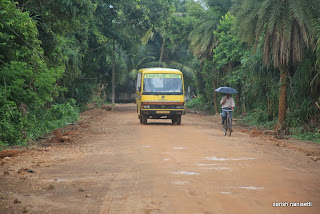Should you buy a new house in a city? In one word: No. Buying a house in a city is a pain in the arse. And it doesn’t make economic sense. Let me tell you as a person who bought and sold two houses in a span of 10 years.
Like most young people, I was made to think that buying a house is the coolest thing to do to show that you have arrived. After you buy the house, you do it up with fancy stuff. Huge sofas, cooking range, tables. double beds, big TVs and in my case, a big aquarium, were the things you acquire for the house. And there is no end to these things, a geyser, a shoe stand, a car, crockery, wood work, that beautiful chair, that yellow lamp shade, this coffee percolater, that potted plant and the list goes on. A no or an inability to buy these trinkets of modern life can trigger intense dissatisfaction that can even dissolve a marriage or spoil happiness for weeks on end.
Economically, also an apartment or an independent house doesn’t make sense. I was made to believe that when you buy a house, you save on income tax. Pure rubbish. For the house that I owned till a few hours back, I paid Rs 540 as interest everyday. That is Rs 15000 pm and Rs 2,25,000 per year. And the money I repaid each year? Rs 96,000. If I didnt own the house, I might have paid Rs 1.5 lakhs as IT but I would have had Rs 75000 more to spend on my family.
So the IT you save when you buy a house on a loan, is the interest you pay! Stupid. Either way you are a loser. One way your hard earned money goes to pay the bank employees or the other way it goes to pay government employees so that they can have a luxurious life.
Most houses in urban areas are overpriced. Just search any online site and there are dozens of postings for houses. Rs 50 lakhs to Rs 2.2 crores is very normal. An average urban salary earner makes about Rs 50,000 per month, so the price of a house is 100 times his monthly salary! Think of all the family sacrifices necessary to payback this huge money!
The houses are overpriced because Indians have a lot of black money. Even I was a willing contributor to black money. While buying the house, the builder asked how much can you give as cash. I quoted an amount. He wanted more. The bells didn’t ring in my mind that the money I am giving as cash is disappearing from the system. But even the builder has to pay cash when he is buying iron, sand, cement, plumbing and other building materials, because none of these dealers accept cheque or card and don’t give bills! So, all the houses we buy just adds to the hoard of black money.
Doesn’t the government know this? Of course. A paint can sold by Asian Paint or Durolux or some other company has a price and the company tells shareholders how much it has sold, but somehow our sales tax officials don’t seem to know about it. Corporate India knows how many iron rods have been sold, but the government doesn’t seem to know, creating a huge stash of unaccounted money.
Now that I have sold the house, I am free. I have some money in the bank and the freedom to live in the area I like. Oh the rent? That will be about half the EMI I used to pay. Will the rents go up? Not much. There are so many houses owned by people with black money, that the supply outstrips the demand. I used to pay Rs 3000 for a single bedroom house in Marredpally about 12 years back. Now, the same house can be rented for Rs 8000. Inflation? Guess, here it is not a problem. To put it in perspective. A cappuchino used to cost me Rs 8 and a frappe Rs 35, now one of them costs Rs 92 and another Rs 143 at Cafe Coffee Day.
So, should you buy a house or rent a house?
Oh BTW I want to rent a house near Somajiguda or Nanal Nagar.





































